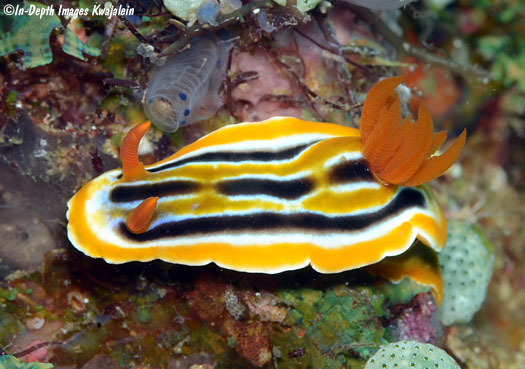
We saw several of these in various sites. Recent DNA analysis by Layton et al (2018) showed that C. colemani varies in color, in some areas matching similar species as a probable kind of mimicry. The authors figure genetically identified C. colemani forms that look very much like C. annae, C. burni and C. westraliensis rather than the originally described C. colemani, indicating that color pattern is not always a reliable means of distinguishing species, at least within this genus. With such differences in color forms, it certainly seems likely that other variations will be found, but at this point I am unsure if the DNA from specimens of the originally described color form from Queensland has been tested. The specimens originally described by Rudman (1982) had a number of narrow, alternating black and orange longitudinal streaks that seem to me quite different from all of the specimens figured on this page.

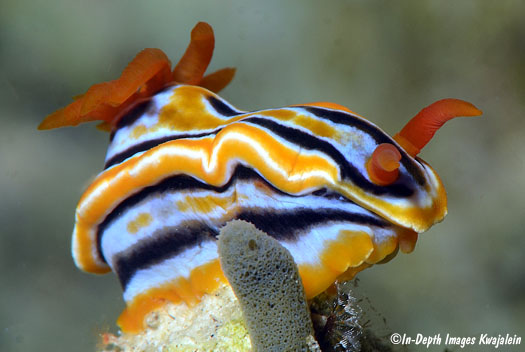
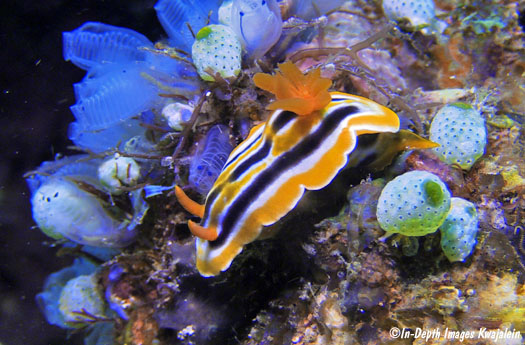
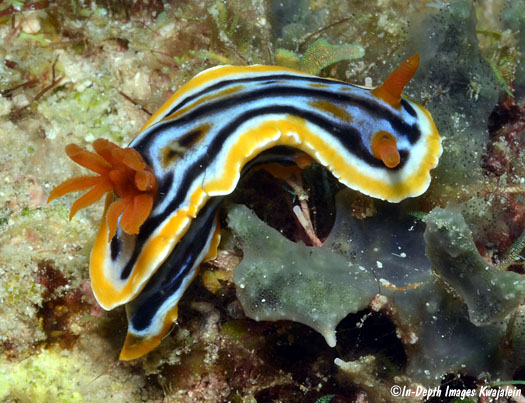
With egg mass.
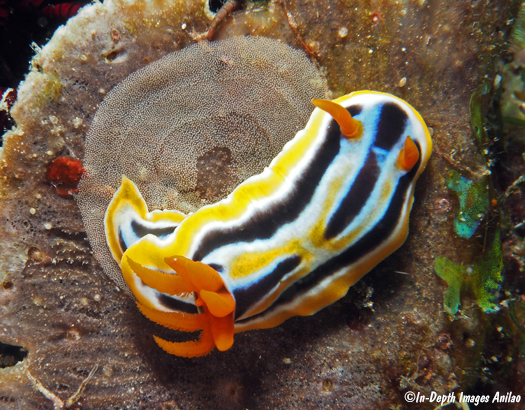
Here are additional apparent color variations of Chromodoris colemani. These approach Chromodoris annae in color but retain a bit of orange coloration in the center of the dorsum. Gosliner et al (2018) figure a specimen very much like the one on the left.
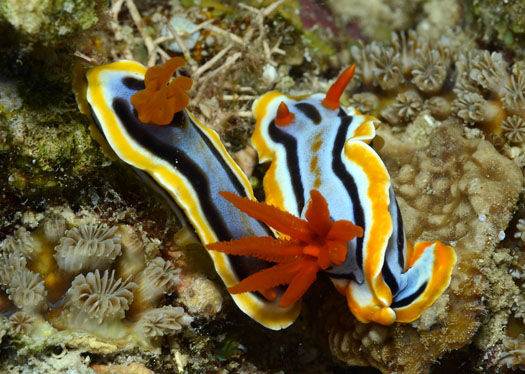
With no trace of orange in the dorsum, the upper specimen in the photo below appears to be a Chromodoris annae. Both are feeding on the same gray sponge.
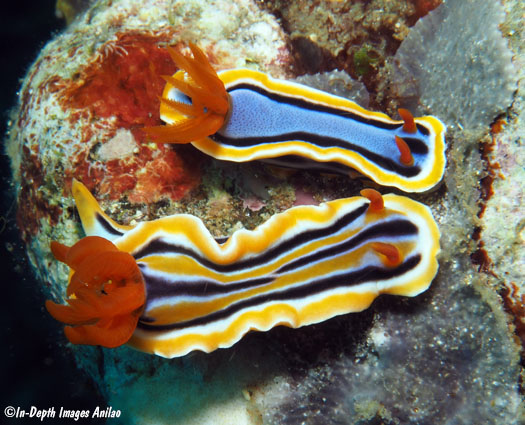
Created 13 June 2015
Updated 25 January 2020